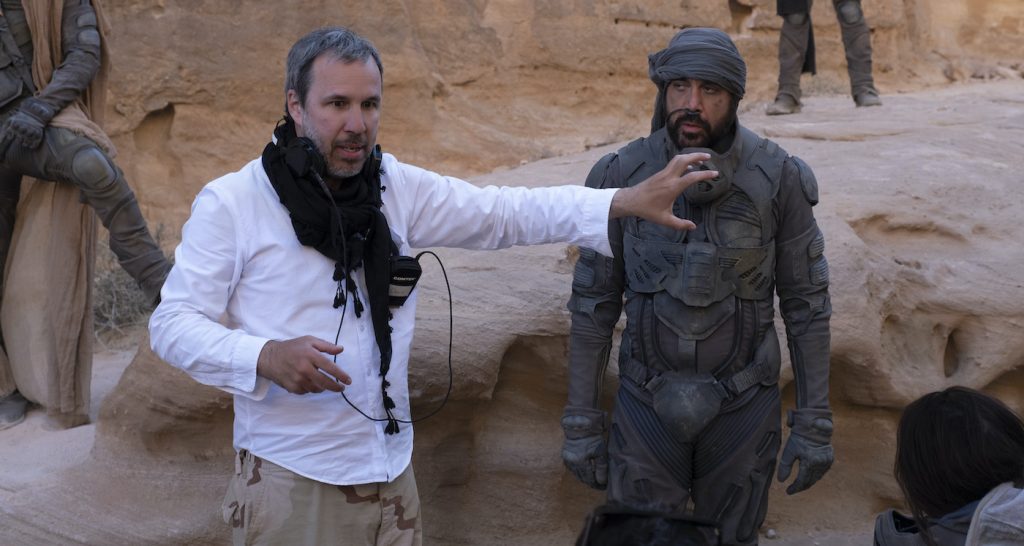Desert Power: The Lasting Success of “Dune: Part Two” & Future Adaptations
While the fact that Denis Villeneuve’s Dune: Part Two has achieved critical and commercial success isn’t all that surprising given the talent involved, it’s still a remarkable story given the wild ride Villeneuve and his collaborators have been on since they first set to work to adapt Frank Herbert’s legendary novel. Herbert’s first 1965 novel (he’d go on to write six novels set in the Dune universe) is a work of genuine sci-fi genius that was also legendarily hard to bring to the big screen. The previous attempts to adapt Dune, a wildly ambitious and ultimately doomed attempt by director Alejandro Jodorowsky (an attempt that later inspired the documentary Jodoworsky’s Dune in 2013) and David Lynch’s 1984 version (which is beloved by some but which did not set the world on fire when it was released) were incomplete at best and overstuffed and ultimately rushed at worst. Jodorowsky’s vision for the film would have resulted in a 14-hour movie, and the production ultimately collapsed. The film rights lapsed, and then in 1982, they were scooped up by Italian producer Dino De Laurentiis, who eventually produced Lynch’s Dune. Lynch, for his part, attempted to get all of Herbert’s 1965 book into his movie, with mixed results. This brings us back to Denis Villeneuve’s first key insight, in which he and co-writer Jon Spaihts wisely decided to break their adaptation of Herbert’s novel into two parts, betting that Warner Bros. would greenlight Part Two once they saw how compelling (and successful) Part One was.

And that’s precisely what happened; only it included some sandworm-sized bumps in the road along the way, the biggest of the bunch being the pandemic, which resulted in Part One‘s being released in theaters and in streaming simultaneously, a decision that Villeneuve was understandably not thrilled about. Yet Dune eventually made a highly respectable $400 million at the global box office, despite its hybrid release and audiences’ wariness about going to the theater in 2021. A recent re-release of Part One on IMAX added another $30 million to that total. The film was also a critical smash and garnered ten Oscar nominations and six wins. A rousing success by any measure, and certainly when the context of its release is taken into account.
Dune: Part Two has been an even bigger hit, thrilling critics and audiences and grabbing a stunning $82.5 million during its opening weekend, and it’s still surfing on the Arrakis sands with a current global haul of $626.3 million. Part of what’s so impressive about Part Two‘s success is how well it keeps holding up, weekend after weekend—it dropped a measly 36% last weekend, it’s fifth in theaters, evidence of the film’s quality and lasting appeal, bringing in new audiences and second-and-third timers for another viewing. It’s been hailed as a masterpiece by critics and fellow filmmakers, including a gentleman by the name of Steven Spielberg.
Considering the density of Herbert’s source material, the less-than-successful previous attempts from very good filmmakers, and the lasting effects of the pandemic on the current theater environment, Villeneuve’s Dune films have been a monumental success story. They’re the result of some of the very best filmmakers and performers in the business coming together to create something truly special, and the courage of those filmmakers to believe that as long as they gave it their all, the audiences would come and the studio would let them see their vision to the end. So far, that’s precisely what’s happened, and it might even lead to a third and final Dune film from Villeneuve, based on Herbert’s second book, “Dune: Messiah.” What you can be almost certain of is the success of Dune and Dune: Part Two pretty much guarantees that we’re still only at the beginning of Hollywood’s Frank Herbert phase—the HBO Max series Dune: Prophecy, about the mysterious sisterhood the Bene Gesserit, will be the first of those projects to see the light.
Desert power indeed.
For more on Dune: Part Two, check out these stories:
“Dune: Part Two” Cinematographer Greig Fraser on Finding Clarity in Chaos
“Dune: Part Two” Cinematographer Greig Fraser on Poisoning the Light of Giedi Prime
“Dune: Part Two” Costume Designer Jacqueline West on Creating a Goth Rock God in Feyd-Rautha
Unveiling the Bene Gesserit’s Secrets With “Dune: Part Two 2” Costume Designer Jacqueline West
Featured image: Caption: TIMOTHÉE CHALAMET as Paul Atreides in Warner Bros. Pictures and Legendary Pictures’ action adventure “DUNE: PART TWO,” a Warner Bros. Pictures release. Photo Credit: Niko Tavernise



